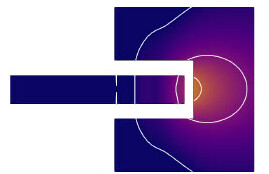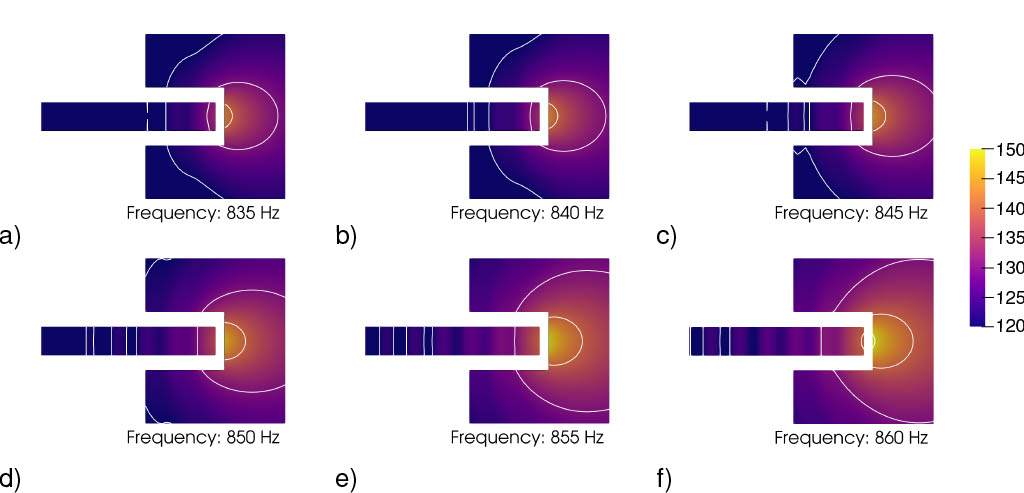The acoustic in and around tubes or ducts plays an important role in our everyday lives, some examples are music instruments like trumpets or human speech production using our vocaltract that can be modelled by ducts. Depending on the form and length of the duct different sounds can be produced (e.g. when blowing into a pan flute).
There are several methods for computing the propagation of sound inside and around tubes and ducts, and each of these methods has its merits and disadvantages. In this work a closer look has been taken on the so called boundary element method. This method has the advantage that once the acoustic field on the duct is known, the radiation of sound from (half) open ducts can be easily determined, but especially for thin walled structures this method has problems with stability and accuracy. A special formulation for thin walled structures was used and it was investigated, which problems arise when using this specific formulation in connection with ducts. One research question was for example how accurate the duct needs to be modelled using small triangles or quadrilaterals to accurately determine the resonance frequency of the duct, i.e. the frequency where the duct produces loud sounds.
Wolfgang, Kreuzer: "Numerical simulation of sound propagation in and around ducts using thin boundary elements", in: Journal of Sound and Vibration, Volume 534, 15 September 2022, 117050. DOI: 10.1016/j.jsv.2022.117050

